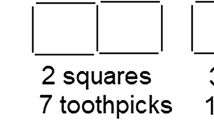Abstract
The two concepts “law” and “theory” are among the most important elements of the nature of science. They represent both the tools and products of science itself. Unfortunately, the variable meanings and use of these terms in general discourse and in other school disciplines results in much confusion with respect to their proper application in a science context. The project included the design of a six-part model definition for “law” and “theory” based on a review of the literature of the philosophy of science with special reference to biology. These model definitions were then compared with those provided in a range of U.S. secondary school biology textbooks. The majority of all current major U.S. secondary school biology texts were reviewed and analyzed with respect to how the concepts of “law” and “theory” were defined and applied, in an attempt to determine whether students and teachers using such texts would gain an accurate impression of these terms and the distinction between them. This study focuses on biology instruction since a life science course is completed as a graduation requirement by virtually all U.S. high school students and as such serves as a widely shared educational experience across the nation. The term “law” is rarely defined in any text but various laws such as those found in genetics are frequently included as examples. The term “theory” is frequently defined but with a wide range of completeness of the definitions. Only rarely are theories in biology included as examples.
Similar content being viewed by others
REFERENCES
Allchin, D. (2003). Lawson's shoehorn, or should the philosophy of science be rated "X?" Science and Education, 12(3), 315–329.
Biggs, A. (1998). Biology: The dynamics of life. Ohio: Glencoe/McGraw Hill.
Biggs, A. (2000). Biology: The dynamics of life. Ohio: Glencoe/McGraw Hill.
Brandon, R.N. (1997). Does biology have laws? The experimental evidence. Philosophy of Science, Proceeding 1996, 64(2), 444–457.
BSCS (1997). BSCS: A human approach. Dubuque, IA: Kendall Hunt.
BSCS (1998). BSCS: An ecological approach, 8th edn. Dubuque, IA: Kendall Hunt.
BSCS (2001). BSCS: A molecular approach, 8th edn. Illinois: Everyday Learning.
Campbell, N., Reece, J. & Mitchell, L. (1999). Biology, 5th edn. California: Benjamin/Cummings/Addison Wesley.
Carey, S.S. (1994). A beginner's guide to scientific method. Belmont, CA: Wadsworth Publishing Company.
Carnap, R. (1966). Philosophical foundations of physics. New York: Basic Books.
Eves, H. (1983). An introduction to the history of mathematics. San Francisco, CA: Saunders College Publishing.
Gibbs, A. & Lawson, A.E. (1992). The nature of scientific thinking as reflected by the work of biologists and by biology textbooks. The American Biology Teacher, 54(3), 137–152.
Gould, S.J. (1988). The case of the creeping fox terrier clone. Natural History, 96(1), 16–24.
Holton, G. & Brush, S.F. (2001). Physics, the human adventure. New Brunswick, NJ: Rutgers University Press.
Horner, J.K. & Rubba, P.A. (1978). The myth of absolute truth. The Science Teacher, 45(1), 29–30.
Horner, J.K. & Rubba, P.A. (1979). The laws are mature theories fable. The Science Teacher, 46(2), 31.
Hull, D. (1974). Philosophy of biological science. Englewood Cliffs, NJ: Prentice-Hall.
Johnson, G. (1998). Biology: Visualizing life. Orlando, FL: Holt, Rinehart and Winston.
Johnson, G. & Raven, P. (1996). Biology: Principles and explorations. Orlando, FL: Holt, Rinehart and Winston.
Johnson, G. & Raven, P. (2001). Biology: Principles and explorations. Orlando, FL: Holt, Rinehart and Winston.
Lawson, A.E. (2003). Allchin's shoehorn, or why science is hypothetico-deductive. Science and Education, 12(3), 331–337.
Lerner, L.S. & Bennetta, W.J. (1986). The treatment of theory in textbooks. The Science Teacher, 55(4), 37–41.
Lewis, R.W. (1986). Teaching the theories of evolution. The American Biology Teacher, 48(6), 344–347.
Lewis, R.W. (1988). Biology: a hypothetico-deductive science. The American Biology Teacher, 50(6), 362–366.
Lewis, R.W. (1990). Theories, speculation, and the structure of knowledge. Speculations in Science and Technology, 13(1), 13–17.
Losee, J. (1993). A historical introduction to the philosophy of science, 3rd edn. New York: Oxford University Press.
Mayer, E. (1988). Toward a new philosophy of biology. Cambridge, MA: The Belknap Press.
McComas, W.F. (1997). Reexamining the nature of science: Lessons of misconceptions and misunderstandings from a science educator. Skeptic, 5(2), 88–95.
McComas, W.F. & Olson, J. (1998). The nature of science in international science education standards documents. In W.F. McComas (Ed.), The nature of science in science education: Rationales and strategies (pp. 41–52). Dordrecht, The Netherlands: Kluwer Academic Publishers.
Miller, K. & Levine, J. (2000). Biology: The Living science. Englewood Cliffs, NJ: Prentice Hall.
Miller, K.R. & Levine, J. (2000). Biology, 5th edn. Englewood Cliffs, NJ: Prentice Hall.
National Academy of Sciences (NAS) (1998). Teaching about evolution and the nature of science. Washington, DC: National Academy Press.
National Council of Educational Research and Training (2003). National curriculum framework: India. Retrieved from http://www.ncert.nic.in/content.htm on July 15, 2003.
National Research Council (NRC) (1996). National science education standards. Washington, DC: National Academy Press.
Ruse, M. (1970). Are there laws in biology? Australasian Journal of Philosophy, 48(20), 234–246.
Ruse, M. (1973). The philosophy of biology. London: Hutchinson University Library.
Schraer, W.D. & Stoltze, H.J. (1999). Biology: The study of life, 7th edn. New Jersey: Prentice Hall.
Strauss, E. & Lisowski, M. (1998). Biology: The web of life. California: Scott Foresman/ Addison Wesley.
Strauss, E. & Lisowski, M. (2000). Biology: The history of life. Illinois: Scott Foresman/ Addison Wesley.
Towle, A. (1999). Modern biology. Orlando, FL: Holt, Rinehart and Winston.
Author information
Authors and Affiliations
Rights and permissions
About this article
Cite this article
McComas, W.F. A Textbook Case of the Nature of Science: Laws and Theories in the Science of Biology. International Journal of Science and Mathematics Education 1, 141–155 (2003). https://doi.org/10.1023/B:IJMA.0000016848.93930.9c
Issue Date:
DOI: https://doi.org/10.1023/B:IJMA.0000016848.93930.9c




